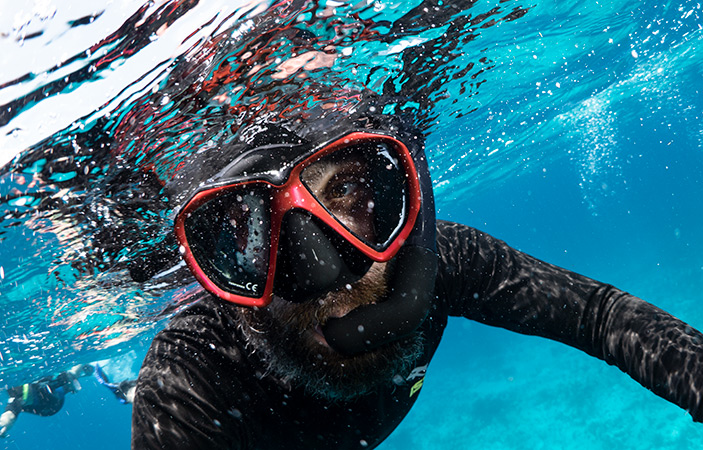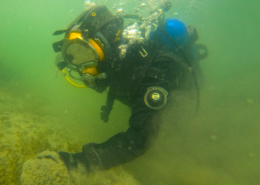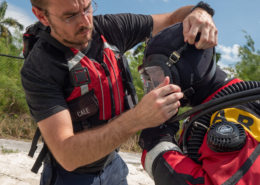What is a Real Public Safety Dive Team Made of?
By: Thomas Powell
In recent months, I have seen various public safety dive teams begin to do something very unique. In a world full of pride, eg, and type personalities, teams are beginning to work together.
These actions all began a few years ago during training. Local dive instructors in my region came together with a focus on improving area public safety dive training. These professionals had backgrounds ranging from fire, law enforcement, technical rescue, water rescue of all types, military training and active service in many different realms. Each one of these professionals had seen issues over the years and was losing a battle to “fix” things working independently. Over time, and with lots of effort and teamwork, things began to change.
Training
As I stated before, training was the pivotal thing that acted as a catalyst for change. When public safety dive classes were planned, this group of professionals worked together. Almost everything took on a team-teaching approach to ensure that many different views could be shown or expressed to different teams on any training day.
Prior to courses, group discussions were held to add additional material or to look at the types of teams being trained, to ensure that the best methods could be presented for any action on the table. As classes began, the instructors walked in with open minds and encouraged ideas, suggestions, and concepts to be presented by students. Any good idea could be put into the proverbial “toolbox” for future classes. Simultaneously, any course held was presented to every regional team. Even if the course was designed or requested for a specific group, any public safety diver was offered the chance to attend.
Over time, classes began to fill with representatives from many teams. In any class, personnel could be found from fire, EMS, rescue, and law enforcement. Not all of these participants were divers. Some were medics. Some were road deputies. Some even came from state agencies to simply better understand what dive teams do when they are called.
In many cases, even classroom presenters were not divers. The associated instructors often invited hyperbaric physicians, a state medical examiner, state law enforcement personnel, and anyone else who could be rounded up to speak on unique topics. This meant that the “odd” questions could really be asked about handling evidence, or what investigators were looking for.
Communication
As teams began to better know one another, and a willingness to train together increased, communications improved. One team would often call another to ask questions associated with a scene or to simply request unique equipment. Barriers were breaking down, but this was at the diver level.
For those of you who are active public safety divers, you know that the final say always comes from the top. To prove efficiency and support capabilities, the decision was made to use social media. Private chat groups were established that consisted of two personnel from each area team. When one team got a call, someone would post up any acceptable information to make sure the other teams knew what was happening.
Similarly, updates could be posted as things progressed. If a need for support could be foreseen, teams with the right equipment and capabilities could start quietly preparing ahead of time. Once a formal request for support could be made, there was no “stand-up” time needed. In many cases, the requested support team could be on the road in moments. This factor improved response times and made departmental leaders recognize that their boys and girls were well prepared for anything. The ease of response has actually led to a much larger potential action that we will discuss later.
State Agency Support
As more and more people became involved in training and regional team growth, contacts were shared. If a question about human remains popped up on a scene, the teams knew who to call. If an investigation became unusual, every type of team member had a better knowledge of who to speak to and how to work together to perform tasks. Essentially, it was easier to solve problems and get questions answered. Each dive team no longer existed in its own little world of operational activity.
An Example of Success
Only a short time ago, a unique dive call showed that success was spreading across the region. In an area roughly six hours from where courses were held, human remains were found. Over the course of an evening, the responding team discovered it was not needed but also found problems associated with the recovery operation. The incredible factor was that the dive team was part of an area rescue squad
Essentially, the divers were seeing problems with actions being taken by law enforcement. Rather than being inappropriate, these divers began to open communication channels that brought more eyes into the investigation. Inevitably, the state took over the investigation. This situation is not any attack on law enforcement. Instead, it shows that all of the types of responders who had been working together over time knew what to look for and how to react when problems were found.
Three state agencies were contacted as well as ERDI instructors, and local emergency management leaders. As a group, all of these people developed a plan of action that solved the problems, set an example for the future, but also kept people out of trouble who did not have the training to know they had even caused a problem. In every respect, on a night when divers were called and did not get to dive, they had performed flawlessly.
Future Potential
With the situation in the region evolving, and agencies, teams, investigators and divers working together in an unprecedented fashion, one last unique situation has developed. Looking at the success of regional dive teams, various team leaders began to communicate to chiefs, sheriffs, and county emergency management leaders that a formal support structure made sense. The idea was proposed to come together to establish a multi-county mutual aid agreement that could make responses, requests, and even equipment planning much easier. Of the five counties represented in the proposal, not a single person in a leadership position has objected. This only represents further the basic concept of a team.
What Makes a Team?
So, what makes up your team? Is it just your divers? Or is it bigger than that? In the region I have been discussing, teams used to stand alone. They took calls as single units and rarely worked together. Today, if I asked many of these associated divers to define their “team,” I would receive a list of agencies, departments, medical personnel, first responders and many others.
The reality is that your “team” is comprised of your personnel and your resources. The wider you reach, the more you share and the more you learn from each other, the larger your pool of resources will become. My challenge to you is to grow your “team.” Do your best to make operations (and training!) safer and more effective by dropping any barriers that have been built by ego, bad leadership, and/or past histories.




 Y. ZIN
Y. ZIN




Leave a Reply
Want to join the discussion?Feel free to contribute!